Multi wavelength composite astronomical image using data from the Jansky Very Large Array, Chandra X-ray Observatory, and optical data from the VLT and Subaru Telescopes. Animated GIF cycles through the individual images (radio, X-ray, optical) of Abell 2744.
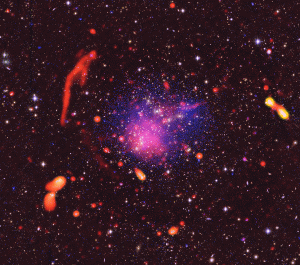
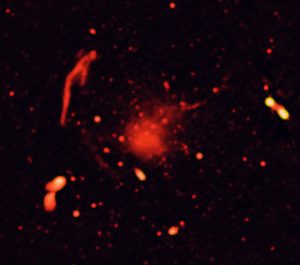
Abell 2744, Radio Only
Radio-only image of Abell 2744 region, showing radio-emitting features caused by subatomic particles accelerated to high speeds by the collisions of giant clusters of galaxies.
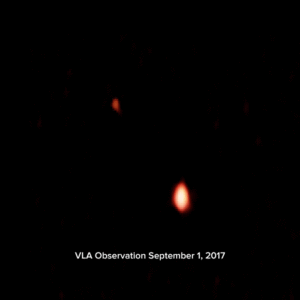
Radio “Eyes” Unlocking Secrets of Neutron-Star Collision
Alternating before-and-after images showing detection of radio waves coming from site where neutron stars collided.
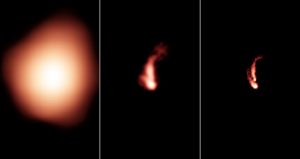
VLASS Sharpens the View
The new VLA Sky Survey (VLASS) sharpens the view. Here is the same radio-emitting object as seen, from left to right, with the NRAO VLA Sky Survey (NVSS), the FIRST Survey, and the VLASS. The VLASS image, unlike the others, allows astronomers to positively identify the image as jets of material propelled outward from the center of a galaxy that also is seen in the visible-light Sloan Digital Sky Survey. Technical data: NVSS image at 1.4 GHz in VLA’s D configuration; FIRST image at 1.4 GHz in B configuration; VLASS image at 3 GHz in B configuration.
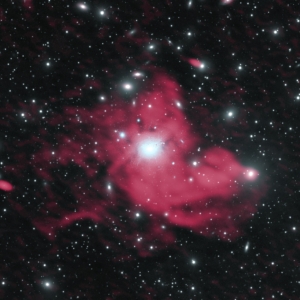
VLA Gives New Insight Into Galaxy Cluster’s Spectacular “Mini-Halo”
Astronomers using the National Science Foundation’s Karl G. Jansky Very Large Array (VLA) have discovered new details that are helping them decipher the mystery of how giant radio-emitting structures are formed at the center of a cluster of galaxies. The scientists studied a cluster of thousands of galaxies more than 250 million light-years from Earth, named the Perseus Cluster after the constellation in which it appears. Embedded within the center, the Perseus Cluster hosts a pool of superfast particles that emit radio waves, creating a radio structure known as a “mini-halo.” Mini-haloes have been found in about 30 galaxy clusters, but the halo in the Perseus Cluster is the largest known, about 1.3 million light-years in diameter, or 10 times the size of our Milky Way Galaxy. Radio emission in red; optical in white.
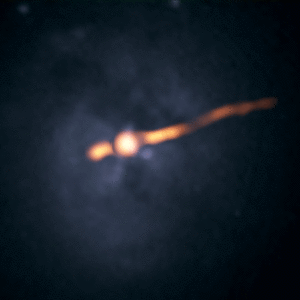
VLA Reveals New Object Near Supermassive Black Hole in Famous Galaxy
VLA radio images (orange) of central region of Cygnus A, overlaid on Hubble Space Telescope image, from 1989 and 2015. Animated GIF.





